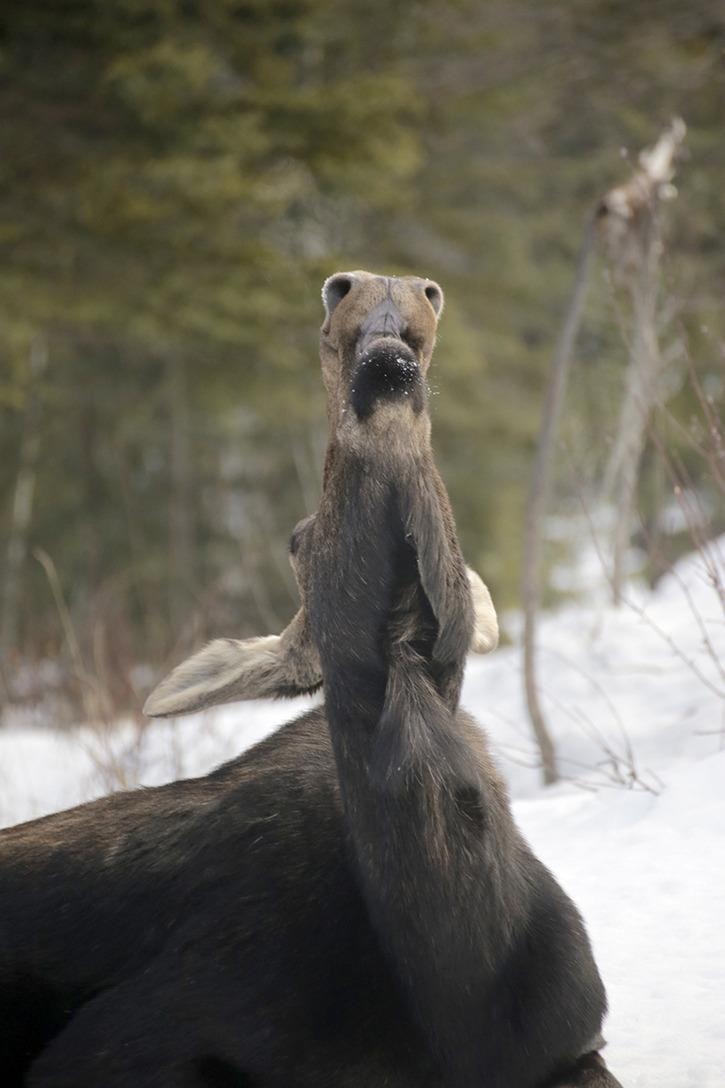Members of the public are now being asked to help document moose winter tick infestations by completing and submitting an online moose winter tick survey before April 30, 2015.
The survey will help B.C.’s Wildlife Health Program staff monitor the number of moose affected with these common ticks, and the extent to which they are affected around the province.
Mike Bridger, Project Coordinator for the provincial moose winter tick surveillance program, said that currently there is “very little data” for tick infestations around the province.
“Most of the information on tick distribution and severity is anecdotal at this point,” he said. “We’re hoping by developing this program that we can acquire some baseline data to observe changes in the distribution and severity of tick infestations from year to year.”
This year’s pilot project will monitor the number of animals with hair loss and the extent of hair loss to estimate winter tick prevalence and distribution.
“The extent of hair loss on a moose is a rough indicator of how many ticks are present,” he explained.
Survey participants are being asked to observe the amount of hair loss occurring on moose and check the survey box which most describes the animal ranging from “no loss” to “ghost” (hair loss over most of the body).
Winter tick infestations are generally observed on moose during the months of February through April. This type of tick spends the winter on one moose and there can be as many as tens of thousands on one animal at a time.
As the ticks mature, they feed on the animal’s blood. In late winter, the irritation results in moose scratching and grooming themselves excessively, resulting in hair loss and less foraging.
“This behaviour takes valuable time away from feeding, resting, or being vigilant for predators,” explained Bridger. “This can often result in death by starvation or predation.”
There is no widely used treatment for tick infested moose.
“There are medications called acaricides that are commonly used to treat domestic livestock for tick infestations. However, the application of such medications to our wild moose populations at a large scale would be very difficult logistically,” he said.
In a period of three years, the moose population in B.C. declined over 14 per cent. The 2014 estimate for B.C.’s moose population was from 120,000 to 205,000 with an average range of 162,500. In 2011, the estimate was from 145,000 to 235,000 with an average range of 190,000.
While moose populations in certain areas of the province remained stable, some areas have been experiencing a decline such as the Cariboo, central Omineca, the North Thompson and Skeena. In 2011/12, a survey of the Bulkley Valley Lakes District confirmed that the moose population had declined by 20 per cent since 2004, according to a report from the Ministry of Forests, Lands and Natural Resource Operations.
Bridger said ticks are associated with climatic conditions, and generally thrive during mild winters with low snow pack.
“If we see climate change occurring in B.C. with warmer temperatures, it is possible that ticks may expand in to new areas and the severity of the infestations may increase,” he said.
Anyone interested in contributing to the surveillance program can obtain a copy of the survey by contacting Mike Bridger at bridger@unbc.ca, 250-961-5869 or visiting http://www.env.gov.bc.ca/fw/public-consultation/moose-winter-tick/
